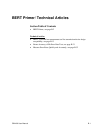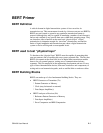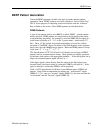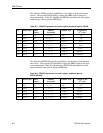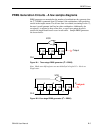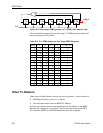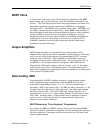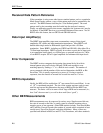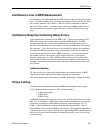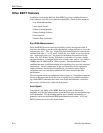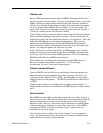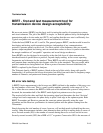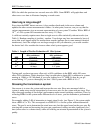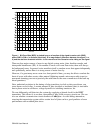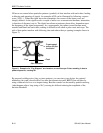
BERT Primer
GB1400 User Manual B-9
Confidence Level in BER Measurement
At first glance, one might think that the BER is known after receiving just one bit
error. It would be expressed as 1 over the total number of bits received. But how
do we know what the “true” BER is? After all, the first errored bit could have
been just a freak “glitch”. In reality, from a statistical confidence point of view,
we must measure long enough to get many errors. This could take a very long
time.
Confidence Requires Collecting Many Errors
If the transmission system had a true BER of 10
-12
, and we were running at 100
Mb/s, the average time between errors would be 10,000 seconds. At 3600
seconds in an hour, the average time between errors would be nearly 3 hours!
We need more than just one “error event” to have any confidence at all in stating
an “error rate”. Also, the more errors we accumulate, the greater our confidence
level that the BER measurement is truly representative of the device under test.
For a Poisson distribution of errors , BER accuracy is 1 over the square root of
the number of errors. An accuracy of 5% requires 400 errors to have been
counted. Conversely, for 95% confidence that an error rate is less than some
limit, the DUT must be error free for three times the reciprocal of that limit. For
example, to assure an error rate less than 10 per hour, the test must run error free
for 0.3 hours.
Additional Reading
Dr. Dan Wolaver has written an excellent article on confidence levels in BER
measurements titled: “Measure Error Rates Quickly and Accurately".
The article appears later in this section on BERT Technology/ Technical Articles.
Stress Testing
Test times can be dramatically reduced in BER measurement by stressing the
device under test to increase errors. This is done by either:
* Adding Attenuation
* Adding Jitter
* Adding Noise
Attenuation degrades S/N (signal-to-noise) ratio, and thus reduces the size of the
data “eye” in amplitude. Adding jitter on the clock (modulating the clock period,
causing the clock edge to jump around) effectively reduces the data “eye” in
width. A third technique is to add noise, which also degrades S/N. Any of
these methods will increase the BER in a known way which allows extrapolation
of what the error rate would be without stress. Measuring BER in the presence of
added stress is an essential technique in testing high quality (very low error rate)
systems quickly.



